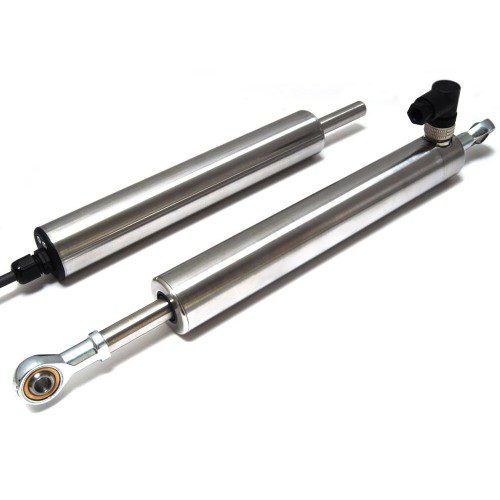CSA, intrinsically safe position feedback for dust environments

CSA, intrinsically safe position feedback for dust environments
The intrinsically safe H111 is CSA approved for use in potentially explosive gas/vapour and dust atmospheres. This heavy-duty version of the H101 sensor with a stronger 12.6mm push rod, recommended for applications where vibration is an issue or there is a need for longer travel sensors, mounted horizontally, and supported between rod eyes. It remains an affordable, durable, high-accuracy position sensor designed for industrial and scientific feedback applications. The unit is highly compact and space-efficient, being responsive along almost its entire length. Like all Positek sensors, the H111 provides a linear output proportional to displacement. Each sensor is supplied with the output calibrated to the travel required by the customer, from 0-5mm to 0-800mm and with full EMC protection built in.
The sensor is very robust, the body and push rod being made of stainless steel for long service life and environmental resistance. Overall performance, repeatability and stability are outstanding over a wide temperature range. The sensor is easy to install with mounting options including M8 rod eye bearings and body clamps. The push rod can be supplied free or captive, with female M8 thread, an M8 rod eye, or dome end, Captive push rods can be sprung loaded, in either direction, on sensors up to 300mm of travel. Environmental sealing is to IP65 or IP67, depending on selected cable or connector options.
Positek intrinsically safe sensors are designed to be used with a galvanically isolated amplifier . Approved galvanic isolation amplifiers (G005) are available from Positek; there is a choice of 0.5-9.5V or 4-20mA transmission outputs.
The sensor can be installed with a cable length up to 1km between the sensor and the amplifier.
Get a detailed view of our products, including their features, specifications, and available models. Find the perfect solution for your needs.

Our product offers a range of advanced features and benefits that set it apart from the competition. With cutting-edge technology and exceptional performance, it delivers unparalleled value to our customers.

Experience improved productivity and precision with our product’s state-of-the-art capabilities.

Simplify complex tasks and optimize workflow with our product’s intuitive design.

Count on our product for long-lasting reliability and consistent performance in any environment.
Find answers to common questions about our products and services.

The service provided by Everight was exceptional. They helped us find the perfect sensor for our application and their expertise was invaluable.


The service provided by Everight was exceptional. They helped us find the perfect sensor for our application and their expertise was invaluable.


The service provided by Everight was exceptional. They helped us find the perfect sensor for our application and their expertise was invaluable.

Fill out the form below to request more information
"*" indicates required fields
"*" indicates required fields